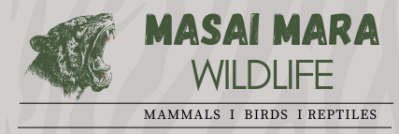Size and Appearance
- Size:
- Head-Body Length (HBT): 140 cm (55 inches)
- Shoulder Height (SH): 40 cm (16 inches)
- Recognition: The African Civet resembles a mix between a cat and a dog, with its robust, stocky build, heavily striped and blotched coat, and a distinctive raccoon-like face. Its tail is banded with black and white, and the civet has a prominent erectile crest of fur along its back, which it raises when alarmed or excited.
Habits and Behavior
- Activity: The African Civet is a solitary and nocturnal creature, spending its nights prowling for food. It is most active around sunset and during the night, rarely seen during daylight hours. When threatened, it raises its crest and can emit a pungent odor from its perineal glands to mark territory or ward off predators.
- Territoriality: Civets mark their territory using a waxy secretion called civetone, which was once highly prized for use in perfumes. Civetone has a strong musky odor and was harvested from civets kept in captivity under harsh conditions. Fortunately, synthetic alternatives have largely replaced this practice since the 1990s, thanks to advocacy by animal welfare groups.
Habitat
- Where to Find: African Civets prefer well-wooded areas, acacia scrub, savannas, and regions near water sources. In the Masai Mara, they can be found in habitats that offer cover and a variety of food sources.
Diet
- Omnivorous Diet: African Civets are highly opportunistic omnivores, feeding on a wide range of food, from plant matter and fruits to invertebrates, small mammals, reptiles, birds, and eggs. They are particularly skilled hunters, using powerful jaws to thrash and kill prey such as rodents. Their varied diet allows them to adapt to different environments and seasonal food availability.
Reproduction
- Gestation and Pups: African Civets have a gestation period of 11 weeks, after which the female gives birth to up to four pups. While males play no role in parenting, the female builds a secure nest in dense vegetation where she raises her young. The pups remain in the nest until they are old enough to accompany the mother on nightly foraging expeditions.
Conservation Status
- IUCN Status: The African Civet is currently classified as Least Concern on the IUCN Red List. This is due to its wide distribution and adaptability across sub-Saharan Africa. However, localized threats exist, including habitat loss and hunting for bushmeat in some areas. Additionally, hybridization and habitat degradation due to human activity can impact certain populations.
- Historical Threats: In the past, African Civets faced significant exploitation for their secretion, civetone, which was used in the perfume industry. Thankfully, the demand for wild-harvested civetone has diminished, and conservation groups have successfully reduced the use of this cruel practice.
Unique Traits
- Erectile Crest: One of the civet’s most impressive physical features is its erectile crest, which it raises when threatened or excited. This display makes the civet appear larger and more intimidating to predators or rivals.
- Vocalizations: During the breeding season, male civets are known to produce a distinct “hahaha” call when courting females, a behavior that can be heard in the quiet of the African night.
Sightings and Encounters
African Civets are not frequently encountered due to their shy and nocturnal nature. However, for those lucky enough to spot one, it is often near dusk or nightfall, wandering near water sources or in well-vegetated areas in search of food. Their secretive nature and unique physical characteristics make them a fascinating, if rare, sight in the wild.
In conclusion, the African Civet is an intriguing and unique species in the Masai Mara, notable for its omnivorous diet, striking appearance, and role in historical perfume production. Conservation efforts have helped protect this species, though it remains vulnerable to habitat loss and localized threats.
